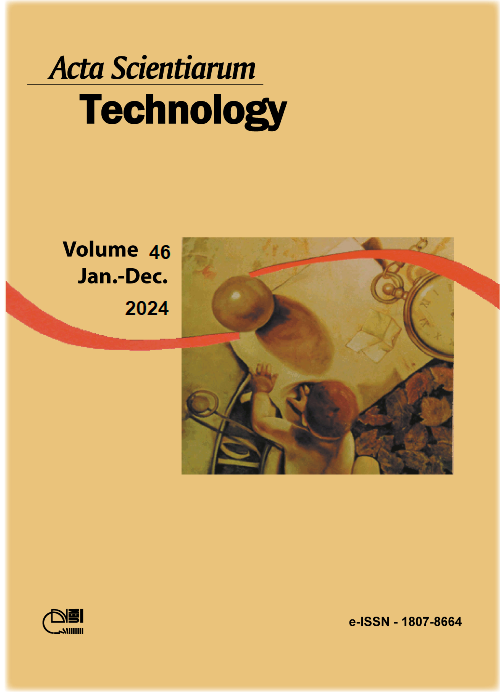Avaliação da produção de biogás a partir do resíduos da indústria de suplementos alimentares
DOI:
https://doi.org/10.4025/actascitechnol.v46i1.65944Palavras-chave:
biomethane; bioenergy; dietary residues; reuse; fuel.Resumo
The increase in the industrial generation of dietary residues negatively affects the planet. Biogas, a result from anaerobic digestion, is produced by the degradation of organic compost converted into energy. Consequently, this energy can be used as an alternative source and contribute to managing industrial residues. Thus, this study aimed to evaluate biogas production from industrial residues in a dietary supplement industry located in the municipality of Estrela, state of Rio Grande do Sul. The methodology is based on the Automated Biogas Measurement System (ABMS), described by Konrad, Hasan, Marder, Zulian, and Guerini Filho (2021), using triplicate samples, and carried out at the Energy and Sustainable Technologies Research Center (ESTRC), located in the Scientific and Technological Park inside the Taquari Valley University - Univates (Tecnovates). The analyzed samples had different characteristics, such as solid and liquid residue. Results showed that the oily, liquid residue presents a higher potential for biogas production, and, in the same way, other substrates also showed positive results for potential biogas and methane production (BBP and BMP). The highest methane percentage reached by the samples was 63.94, 71.83; 70.55; 71.24; and 67.38% (for SR, GLR, OLR, Mix 50/50 RL and Mix S/L 96/4, respectively). Residues from dietary supplements showed positive potential for the production of biogas and methane. Furthermore, the effluent of anaerobic digestion can be used as a fertilizer, since it is rich in vitamins and minerals.
Downloads
Downloads
Publicado
Como Citar
Edição
Seção
Licença
DECLARAÇíO DE ORIGINALIDADE E DIREITOS AUTORAIS
Declaro que o presente artigo é original, não tendo sido submetido í publicação em qualquer outro periódico nacional ou internacional, quer seja em parte ou em sua totalidade.
Os direitos autorais pertencem exclusivamente aos autores. Os direitos de licenciamento utilizados pelo periódico é a licença Creative Commons Attribution 4.0 (CC BY 4.0): são permitidos o compartilhamento (cópia e distribuição do material em qualqer meio ou formato) e adaptação (remix, transformação e criação de material a partir do conteúdo assim licenciado para quaisquer fins, inclusive comerciais.
Recomenda-se a leitura desse link para maiores informações sobre o tema: fornecimento de créditos e referências de forma correta, entre outros detalhes cruciais para uso adequado do material licenciado.















